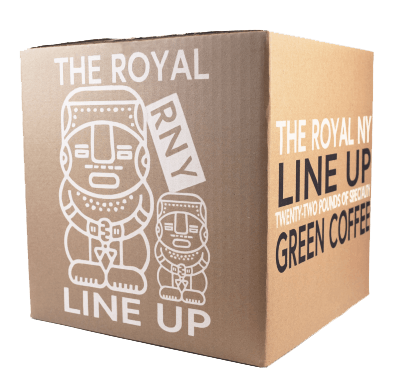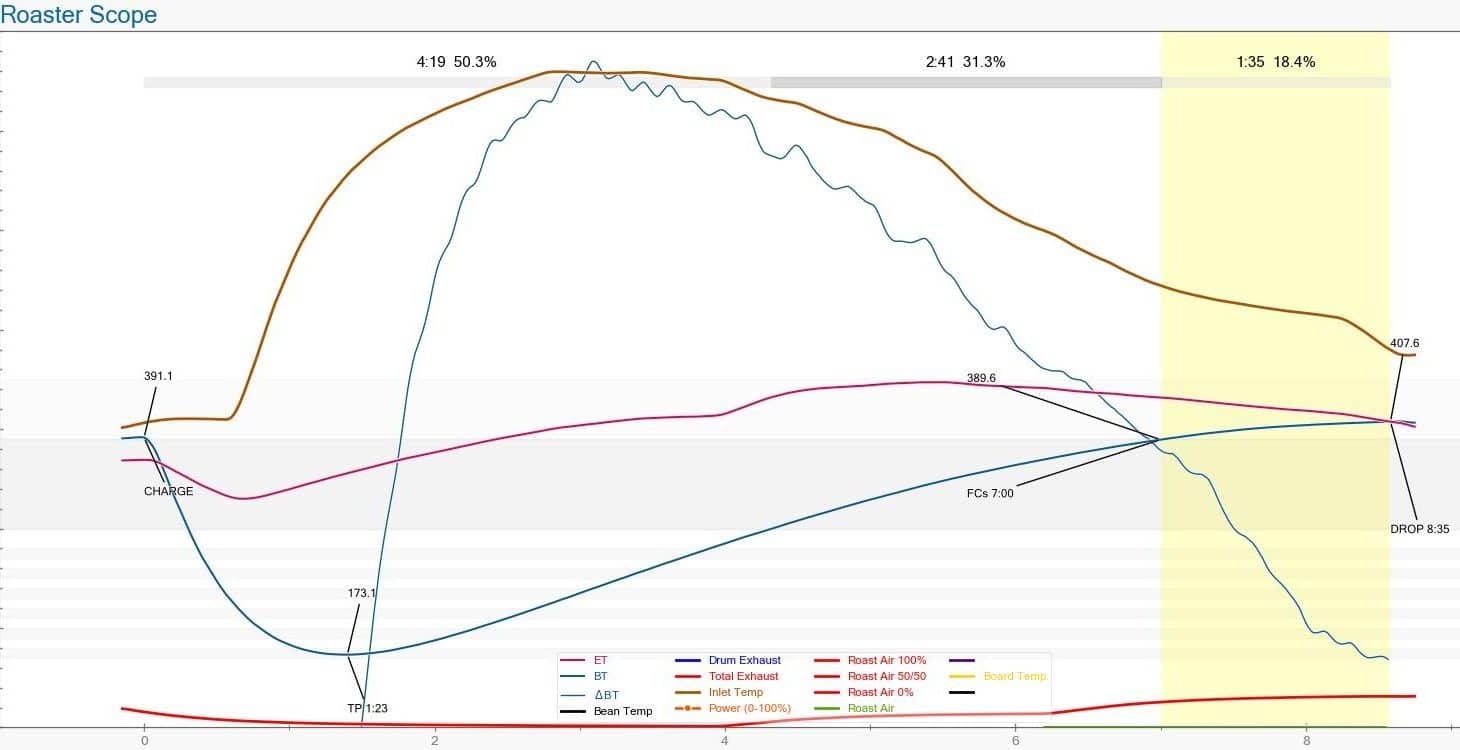No products in the cart.

How To Use the Roast Profile Library
To use the roast library, you must have a working knowledge off some roasting principles and general understanding of your own roasting style and equipment
We set out to provide roasting guidance to help any roaster who is new to the industry or new to roasting a certain coffee. We chose a core list of our coffees and tested several roast profiles so that we could see under what conditions they perform the best in order to give perspective buyers a general idea of where to start with their first roasts.
In order to appeal to roasters across different machines, with varying heat sources, controls, and batch sizes, and operating in different locations, we chose to create a graphic that would be easy for the reader to translate to their roasting system. It is simpler than expecting anyone to translate our Artisan roast curves from our Diedrich IR-5 to any of your equipment.
The images below represent roasts that fall under what we ultimately decided on our “Average” roast. All other roasts are referred to as Faster/slower to first crack Shorter/Longer in total time and ending at Lighter/Darker temperatures.
Each Roast is sorted by Region of Origin, processing style, and expected flavor profile. The most important consideration is that not every coffee can be roasted to have a certain flavor profile. When purchasing a coffee, we list tasting notes that we feel describe the overall cup profile of a coffee. These will be in line with the descriptors used on our roasting guides.
For example, coffees purchased with the descriptors Milk Chocolate, Walnut, and Creamy should be roasted using the Sweet and Mellow roast guide. Roasting those coffees using the Complex and Vibrant roasting guide doesn’t mean the resulting coffee will taste that way since the starting raw coffee does not have the necessary chemical composition to result in a roasted product that is high in acidity and sweetness.
Pictured below is the fastest and lightest roast we did on a Washed Ethiopian coffee from the Aricha Mill. It was Complex and Vibrant on the cupping table
Different green coffee attributes will help you distinguish what type of heat application should be used, most importantly are Density, Moisture, and Screen Size. Simply, Higher Density coffees can absorb and transfer heat efficiently, so they can be roasted with higher heat application. High density is also an indication of high available acidity, and to prevent those acids from degrading we should roast the coffees quickly to a Light end temperature. Low density coffees may produce off flavors or scorch if roasted this way.
High Moisture coffees require more time and energy to be roasted evenly. Relatively more heat is absorbed by water instead of driving flavor reactions like Maillard or Caramelization. To prevent uneven bean development, it is best to use a lower initial heat application to extend the “Drying” portion of the roast during the green and yellow phases.
How large or small a bean is will influence the distance heat will need to travel to adequately roast the center of the bean and the surface area that is absorbing heat. Larger beans will have a greater distance absorbed heat will need to travel to reach the bean center, while smaller beans will transfer heat to their center relatively quickly. To roast evenly, larger beans should be roasted a bit more gently over a slightly longer period of time to compensate for their slower absorption of heat. Smaller beans can be roasted more aggressively.
Pictured below is our slowest, and darkest roast of a Wet-hulled coffee Sumatra. It is high in moisture, low in density, with a relativley large average bean size.
After roasting coffee, it is always best to cup that roast with the roasting data. Generally, if you are looking for more Acidity and complexity, the coffee should be roasted lighter and/or faster. Generally, if you are looking for more body, the coffee should be roasted darker and/or slower. If you are looking for more sweetness, the coffee may have been roasted too light and too fast or too long and too dark.
There are certain rules of thumb that can help when starting your roasting, and overall they held true for the coffees we tested. High-grown, washed coffees should typically be roasted the fastest and lightest. Low-grown, wet-hulled coffees should be roasted the slowest and darkest. Naturally processed coffees should be roasted longer and sometimes darker than their washed counter-parts, depending on their elevation and quality.











